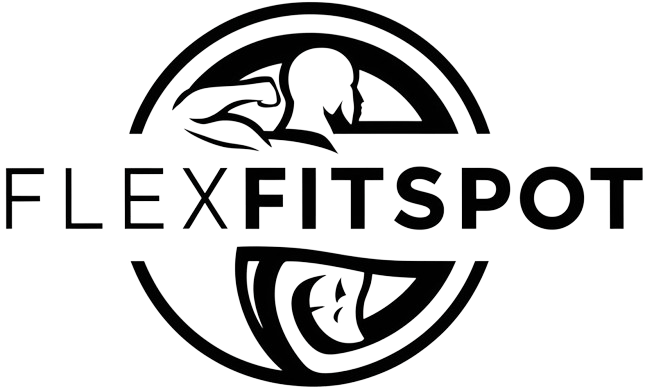Introduction to Calisthenics Workout Plan for Beginners
Calisthenics, a form of exercise that relies on an individual’s body weight for resistance, has been gaining significant traction in the fitness world, particularly in 2024. This method of training includes a variety of movements such as push-ups, pull-ups, squats, and planks, which are designed to enhance strength, flexibility, and endurance without the necessity of gym equipment. The appeal of calisthenics lies in its simplicity and accessibility, making it an ideal starting point for beginners.
The benefits of calisthenics are multifaceted. First and foremost, it encourages the development of functional strength, which is the type of strength used in everyday activities. Unlike traditional weight training that often focuses on isolated muscle groups, calisthenics exercises engage multiple muscle groups simultaneously, promoting better overall muscle coordination and balance. For instance, a push-up not only works the chest muscles but also engages the arms, core, and even the legs to maintain proper form.
Flexibility is another significant advantage of calisthenics. The dynamic movements involved in these exercises help to elongate muscles and enhance joint mobility. Over time, this increased range of motion can lead to better posture and a reduced risk of injuries. Furthermore, calisthenics can be tailored to fit any fitness level, offering modifications for beginners and advanced variations for more experienced individuals.
In 2024, the popularity of calisthenics has surged, aligning with broader fitness trends that emphasize holistic, sustainable, and equipment-free workouts. As people continue to seek out convenient and effective ways to stay fit amidst busy schedules, calisthenics stands out as a practical solution. This form of exercise not only fosters physical health but also promotes mental well-being, as the focus on controlled movements and body awareness can lead to improved mindfulness and reduced stress levels.
Overall, calisthenics provides a comprehensive workout routine that can be performed anywhere, making it an excellent choice for those beginning their fitness journey. By incorporating calisthenics into your workout plan, you can build a strong, flexible, and resilient body without the need for a gym membership or expensive equipment.
Getting Started: Essential Tips for Beginners
Embarking on a calisthenics journey can be both exciting and challenging. To ensure a smooth start, it’s crucial to prepare adequately. One of the first steps is to establish a proper warm-up routine. Warming up helps to increase blood flow to your muscles, reduce the risk of injury, and improve overall performance. Start with dynamic stretches and light cardio exercises such as jumping jacks or high knees to get your body ready for the workout.
Another critical aspect of calisthenics is maintaining proper form and technique. Unlike traditional weightlifting, calisthenics relies heavily on body weight and natural movements. Poor form can lead to injuries and impede progress. Focus on mastering the basics with the correct technique to build a solid foundation. Utilize mirrors or record yourself to ensure you are performing exercises correctly.
Safety should always be a priority. As a beginner, it’s essential to listen to your body and avoid overexertion. Start with exercises that match your current fitness level and gradually increase the intensity. Incorporating rest days into your routine will allow your muscles to recover and grow stronger, reducing the likelihood of overuse injuries.
Setting realistic goals is key to staying motivated. Break down your long-term objectives into smaller, achievable milestones. This approach not only keeps you focused but also provides a sense of accomplishment as you progress. Tracking your improvements, whether through a workout journal or a fitness app, can help you stay on course and celebrate your progress.
While calisthenics primarily uses body weight, some basic equipment can enhance your workouts. A pull-up bar is essential for exercises like pull-ups and chin-ups, while resistance bands can add variety and help with assisted movements. These tools are relatively inexpensive and can be easily integrated into your routine.
By following these essential tips and maintaining a disciplined approach, you’ll be well on your way to achieving your calisthenics goals. Stay committed, practice consistently, and enjoy the journey towards a fitter, stronger you.
Day 1: Full Body Workout
Starting the 7-day calisthenics workout plan with a full-body routine sets the foundation for the week ahead. This approach ensures that all major muscle groups are activated, providing a balanced introduction to calisthenics. The exercises for Day 1 include push-ups, squats, lunges, and planks, each carefully chosen to engage multiple muscle groups and promote overall strength.
Push-Ups: Begin with 3 sets of 8-10 repetitions. Push-ups target the chest, shoulders, triceps, and core. To maintain proper form, keep your body in a straight line from head to heels, lower yourself until your chest nearly touches the ground, and then push back up. For beginners, knee push-ups are a suitable modification.
Squats: Perform 3 sets of 12-15 repetitions. Squats are fundamental for building leg strength, focusing on the quadriceps, hamstrings, and glutes. Stand with feet shoulder-width apart, lower your body by bending your knees and hips as if sitting back into a chair, and rise back up. Ensure your knees do not extend past your toes.
Lunges: Complete 3 sets of 10-12 repetitions on each leg. Lunges enhance balance and coordination while working the legs and glutes. Step forward with one leg, lowering your hips until both knees are bent at about a 90-degree angle, then push back up to the starting position. Keep your torso upright throughout the movement.
Planks: Hold for 3 sets of 20-30 seconds. Planks are excellent for core stability and strength. Position yourself as if at the top of a push-up, then hold your body straight, supported by your forearms and toes. Engage your core and avoid letting your hips sag.
This full-body workout on Day 1 primes your body for the more focused exercises to come. By engaging multiple muscle groups, you build a solid foundation of strength and endurance, essential for progressing through the rest of the week. Pay close attention to maintaining proper form to maximize effectiveness and minimize the risk of injury.
Day 2: Upper Body Focus
Day 2 of our 7-day calisthenics workout plan is dedicated to enhancing upper body strength, emphasizing the chest, shoulders, and arms. Building a robust upper body is crucial as it not only improves your physical appearance but also supports overall functional fitness, aiding in daily activities and other forms of exercise.
The cornerstone exercises for this day include pull-ups, dips, and shoulder presses. Each of these exercises targets different muscle groups within the upper body, providing a comprehensive workout.
Pull-ups: This exercise primarily targets the latissimus dorsi, biceps, and upper back. Begin by gripping the pull-up bar with your palms facing away from you. Pull your body upward until your chin is above the bar, then lower yourself back down with control. For beginners, assisted pull-ups using resistance bands or a machine can be beneficial.
Dips: Dips are excellent for engaging the triceps, chest, and shoulders. Position yourself on parallel bars, with your arms fully extended and your body in a straight line. Lower your body by bending your elbows until your upper arms are parallel to the ground, then push back up to the starting position. Beginners may find bench dips or using assistance beneficial to build initial strength.
Shoulder Presses: This exercise targets the deltoids, triceps, and upper chest. While traditionally performed with weights, in calisthenics, you can use pike push-ups or handstand push-ups as effective alternatives. For pike push-ups, position yourself in a downward dog pose and lower your head towards the ground by bending your elbows, then push back up. Handstand push-ups require more advanced strength and balance, and can be modified by performing them against a wall.
As you progress, increase the number of sets and repetitions or reduce the level of assistance to continuously challenge your muscles. It’s essential to maintain proper form to prevent injuries and maximize the effectiveness of each exercise. Integrating these upper body exercises into your routine will contribute significantly to your overall fitness and strength.
Day 3: Lower Body Focus
On the third day of our calisthenics workout plan, the emphasis shifts to the lower body. Strengthening the lower body is crucial, as it enhances overall stability, mobility, and athletic performance. Key muscle groups targeted include the quadriceps, hamstrings, glutes, and calves. By focusing on these areas, you not only build muscle but also improve your ability to perform everyday activities and other athletic pursuits.
Begin your workout with squats, a fundamental exercise that targets the quadriceps, hamstrings, and glutes. Position your feet shoulder-width apart, lower your body as if sitting in a chair, and ensure your knees do not extend past your toes. Perform 3 sets of 15 repetitions. Squats are essential for building lower body strength and enhancing joint stability.
Next, incorporate lunges to further engage the quadriceps and glutes. Start in a standing position, step one foot forward, and lower your hips until both knees are bent at a 90-degree angle. Alternate legs and complete 3 sets of 12 repetitions on each side. Lunges are excellent for improving balance and coordination.
To target the calf muscles, include calf raises in your routine. Stand with your feet hip-width apart and slowly raise your heels off the ground, then lower them back down. Perform 3 sets of 20 repetitions. This exercise strengthens the calves, contributing to better stability and explosive power in activities like running and jumping.
Conclude the workout with glute bridges to activate the glutes and hamstrings. Lie on your back with knees bent and feet flat on the floor. Lift your hips towards the ceiling, squeezing your glutes at the top, and then lower back down. Aim for 3 sets of 15 repetitions. Glute bridges are beneficial for enhancing lower back stability and reducing the risk of injury.
Incorporating these exercises into your routine not only strengthens the lower body but also improves functional movement patterns, making everyday tasks easier and boosting overall athletic performance. Prioritize proper form and gradually increase intensity to maximize results from your lower body workout.
Day 4: Core Strength and Stability
Day 4 of the 7-day calisthenics workout plan for beginners focuses on core strength and stability. Developing a strong core is fundamental in enhancing overall fitness and preventing injuries. The core muscles, which include the abdominals, obliques, and lower back, play a crucial role in stabilizing the body during various movements, especially those involved in calisthenics.
To begin, planks are an excellent exercise for targeting multiple core muscles simultaneously. Start in a push-up position, ensuring your body forms a straight line from head to heels. Engage your core by pulling your belly button towards your spine and hold this position for 30 seconds to a minute. This exercise not only strengthens your abdominal muscles but also enhances your lower back stability.
Next, incorporate Russian twists to engage the obliques. Sit on the floor with your knees bent and feet flat. Lean back slightly, keeping your back straight, and hold your hands together in front of you. Twist your torso to the right, then to the left, ensuring that the movement is controlled and your core remains engaged. Perform 15-20 twists on each side.
Leg raises are another effective exercise for targeting the lower abdominals. Lie flat on your back with your legs straight. Place your hands under your hips for support and lift your legs towards the ceiling, keeping them straight. Slowly lower them back down, ensuring they do not touch the floor. Repeat this movement for 10-15 reps.
Finally, mountain climbers are a dynamic exercise that not only strengthens the core but also provides a cardiovascular workout. Start in a plank position and bring one knee towards your chest, then quickly switch legs as if you are running horizontally. Keep your core tight and perform this exercise for 30-60 seconds.
Incorporating these exercises into your routine will significantly enhance your core strength and stability, supporting other movements in your calisthenics journey. A strong core provides the foundation needed for effective and safe execution of various exercises, contributing to overall fitness and injury prevention.
Day 5: Active Recovery and Flexibility
In any comprehensive workout plan, the significance of recovery and flexibility cannot be overstated. Day 5 of our 7-day calisthenics workout plan is dedicated to active recovery and flexibility, vital components for achieving optimal performance and reducing the risk of injury. Active recovery involves engaging in low-intensity activities such as light cardio, yoga, or stretching routines, which can facilitate muscle repair and enhance overall mobility.
Active recovery helps stimulate blood circulation, delivering essential nutrients to muscles and aiding in the removal of metabolic waste products. Activities such as a brisk walk, gentle cycling, or swimming can be effective forms of light cardio that keep you moving without putting undue stress on your muscles.
Incorporating yoga into your active recovery day can also be highly beneficial. Yoga not only enhances flexibility but also improves balance and core strength, essential for performing calisthenics exercises efficiently. Poses such as the Downward Dog, Child’s Pose, and Cat-Cow Stretch can help elongate and relax muscles, promoting recovery.
Stretching routines are another crucial aspect of active recovery. Effective stretching techniques can target different muscle groups, ensuring comprehensive flexibility and mobility. For instance, to stretch the hamstrings, you can perform a standing hamstring stretch by bending forward at the hips and reaching towards your toes. To target the quadriceps, a standing quad stretch, where you hold one ankle behind you while balancing on the other leg, can be effective. For the upper body, a chest opener stretch, performed by clasping your hands behind your back and gently lifting them, can relieve tension in the chest and shoulders.
Incorporating these activities into your workout plan not only aids in muscle repair but also prepares your body for more intense training sessions in the following days. By prioritizing active recovery and flexibility, you can enhance your performance, prevent injuries, and ensure long-term progress in your calisthenics journey.
Day 6: Combining Moves for a Full Body Circuit
On Day 6 of our 7-day calisthenics workout plan for beginners, we introduce a full-body circuit workout. This circuit combines exercises from previous days, ensuring a balanced approach to training all major muscle groups. By integrating upper body, lower body, and core exercises, this comprehensive workout aims to enhance overall fitness and endurance.
Circuit training offers numerous benefits, particularly for beginners. It improves cardiovascular health by keeping your heart rate elevated throughout the workout. Additionally, the continuous movement from one exercise to the next helps build muscular endurance and burn calories efficiently. This type of training also allows for a dynamic and engaging workout session, keeping you motivated and focused.
Below is a sample full-body circuit workout designed to target various muscle groups:
Sample Full-Body Circuit
1. Push-Ups: 3 sets of 10-12 reps
2. Squats: 3 sets of 15 reps
3. Plank: 3 sets of 30 seconds
4. Tricep Dips: 3 sets of 10-12 reps
5. Lunges: 3 sets of 12 reps per leg
6. Bicycle Crunches: 3 sets of 15 reps per side
For each exercise, move from one to the next with minimal rest, aiming to keep your heart rate elevated. Once you complete all six exercises, take a 1-2 minute break, then repeat the circuit 2-3 times depending on your fitness level.
By combining these moves, you engage multiple muscle groups and ensure a thorough workout. This full-body circuit is designed to challenge your strength, endurance, and cardiovascular system, making it an effective way to boost your fitness journey.
Day 7: Rest and Reflect
As you reach the end of your 7-day calisthenics workout plan, it is crucial to acknowledge the importance of rest and recovery. Taking a rest day is not merely a break from physical exertion but a vital component of any effective fitness regimen. Rest days facilitate muscle growth, repair, and overall recovery. During intense workouts, muscle fibers undergo microscopic tears; rest periods allow these fibers to heal and strengthen, contributing to increased muscle mass and endurance.
Additionally, incorporating rest days helps prevent burnout and reduces the risk of injuries. Continuous, strenuous exercise without adequate rest can lead to overtraining syndrome, characterized by fatigue, decreased performance, and even psychological stress. By allowing your body the necessary time to recuperate, you enhance your ability to maintain a sustainable and enjoyable workout routine.
On this rest day, take some time to reflect on your progress over the past week. Assess how your body feels, consider any improvements in strength or flexibility, and acknowledge the dedication you have shown. Reflecting on your achievements can be a powerful motivator, reinforcing your commitment to your fitness goals. It’s also an opportunity to reassess your goals and plan the next steps in your calisthenics journey. Set realistic and attainable objectives for the coming weeks, whether it’s mastering a new exercise or increasing your workout intensity.
Maintaining motivation is essential for long-term success. Celebrate your milestones, no matter how small, and remind yourself of the reasons you embarked on this fitness journey. Surround yourself with a supportive community, whether in person or online, to share experiences and gain encouragement. Consistency is key; create a workout schedule that fits your lifestyle and stick to it. Remember, every step forward, no matter how minor, is progress. Stay dedicated, and the results will follow.




























